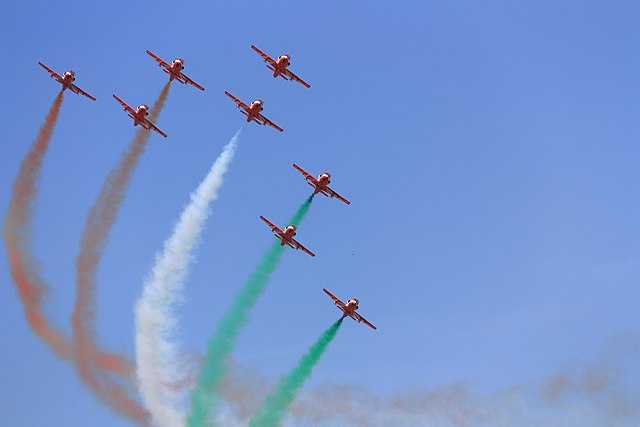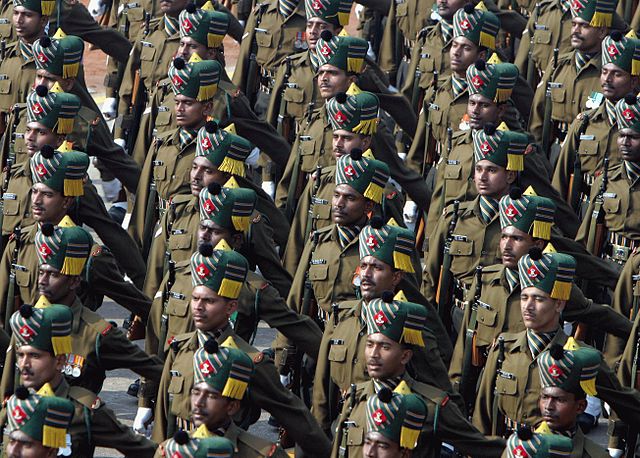Republic Day is the name of a holiday in several countries to commemorate the day when they became republics.
Frecce tricolori at the Festa della Repubblica in Italy, June 2, 2005.
Surya Kiran Aerobatics Team displaying tricolor in India, February 11, 2011.
Soldiers of the Madras Regiment during the annual Republic Day Parade in 2004.
Socialist Federal Republic of Yugoslavia
The Socialist Federal Republic of Yugoslavia (SFRY), commonly referred to as SFR Yugoslavia or Socialist Yugoslavia or simply as Yugoslavia, was a country in Central and Southeast Europe. It emerged in 1945, following World War II, and lasted until 1992, breaking up as a consequence of the Yugoslav Wars. Spanning an area of 255,804 square kilometres (98,766 sq mi) in the Balkans, Yugoslavia was bordered by the Adriatic Sea and Italy to the west, Austria and Hungary to the north, Bulgaria and Romania to the east, and Albania and Greece to the south. It was a one-party socialist state and federation governed by the League of Communists of Yugoslavia, and had six constituent republics: Bosnia and Herzegovina, Croatia, Macedonia, Montenegro, Serbia, and Slovenia. Within Serbia was the Yugoslav capital city of Belgrade as well as two autonomous Yugoslav provinces: Kosovo and Vojvodina.
Marshal Josip Broz Tito led Yugoslavia from 1944 to 1980.
Yugoslav ration stamps for milk, 1950
Tito in 1973
U.S.–Yugoslavia summit, 1978







